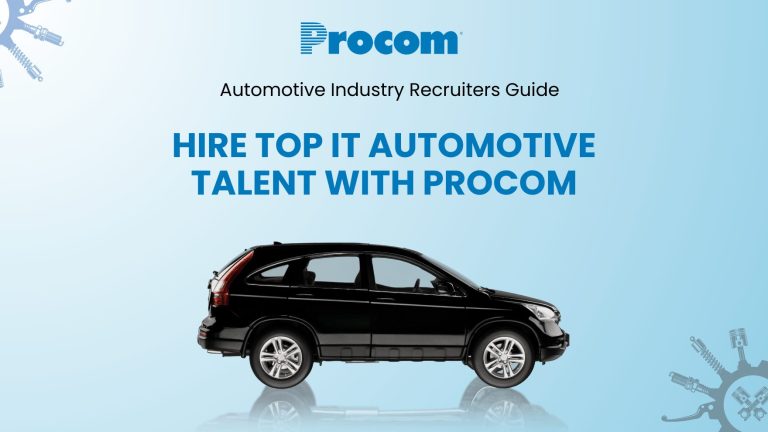Rapidly evolving technologies and disruptive economic forces have altered the workforce skill sets that many companies rely upon, and critical skills gaps have emerged across multiple industries.
Today’s skills gaps are often technological in nature, and they span diverse sectors. For example, a 2018 study by the business auditing and advisory firm Deloitte indicates that a lack of in-demand skills may contribute to nearly 2.5 million vacant positions in the manufacturing industry alone by 2028, with an estimated economic impact of approximately $2.5 trillion.
More recently, Fortune reported on a global digital-skills gap affecting a broad range of tech fields, including website design, coding, data encryption and programming. Many employers say they struggle to find appropriately skilled talent, while many workers admit their skill sets are lagging within their chosen professions.
Bridging skills gaps within your organization requires awareness that essential skills gaps exist and being intentional about identifying them, addressing current skills gaps and preparing for future skills gaps.
If you’re responsible for talent within your organization, the following will help you in identifying skills gaps and address them before they have an impact on your talent, work and projects.
What are organizational and employee skills gaps?
At an individual level, a skills gap is the difference between the skills existing employees need to to perform their job and their actual skills. At an organizational level, a skills gap occurs when no one internally fulfills a given process.
Several factors contribute to skills gaps, but an analysis of modern skills gaps by the Harvard Business Review observes technology is the driving force behind many current skills gaps and those that are forthcoming. Employers face real challenges finding skilled personnel adept with the technology essential to their organizations’ productivity and profitability.
These challenges highlighted by this skills gap assessment do not represent mass educational failures but rather reflect a reality in which technology is advancing faster than educational and training resources, even as that technology becomes relied upon by countless businesses. New and updated technologies often require new skills for which schools do not yet provide instruction and the labor market does not yet supply.
However, skills gaps are not always related to hard skills, such as technical expertise. Skills gaps may also stem from the need for specific soft skills, such as critical thinking, and interpersonal skills, including effective communication and bilingual capabilities.
How to address skills gaps
After an organization has identified skills gaps, the next step is to decide whether to close skills gaps through new talent or internal training and development.
If a company’s current workforce has the time and capacity to learn new skills or refine their existing skill sets, upskilling or reskilling may be advantageous. These options allow employers to retain proven workers and their institutional knowledge, and many workers appreciate the opportunity to keep their career skills sharp.
The availability of ongoing training can also be attractive when it’s necessary to hire new talent to fill skills gaps. Job seekers often favorably view organizations that invest in their employees’ futures.
Workforce management and talent acquisition agencies can also be beneficial in overcoming skills gaps. Reputable firms have proven experience in varying industries and are dedicated to staying up-to-date about relevant jobs and the skills necessary to perform them.
Future-proofing against skills gaps
It’s not always possible to predict skills gaps, but it is possible to prepare for them.
An increasingly common, forward-looking approach to professional development that can help prevent skills gaps is upskilling and reskilling workers who are otherwise qualified and productive. In addition to the benefits noted previously, offering ongoing training to current employees eliminates the time and costs associated with hiring and onboarding new talent.
Management should also have an ongoing dialogue with employees about their workplace goals and skills and the organization’s expectations for maintaining desired skills. This conversation may be initiated and sustained through performance evaluations, employee surveys or team meetings.
While retaining loyal employees is essential, it’s also critical for companies to recognize when they need outside help to fill a skills gap. This may be ascertained through a regular skills gap analysis administered internally or by a workforce management partner.
When hiring outside talent to address skills gaps, be transparent with current staff. Explain the existing or projected skills gap, how external talent will fill that void, and the relationship with current personnel moving forward.
Skills gaps will always lurk, but organizations can hurdle them with foresight and intentional talent acquisition strategies.
Identifying skills gaps and what’s next – Strategic talent acquisition with Procom
Not every technical skills gap can—or should—be solved internally. As technology evolves and business demands shift, even well-designed training programs can fall short in addressing the potential skills gaps created by emerging needs. That’s where Procom brings value: helping organizations make agile, informed hiring decisions when internal capabilities hit their limits.
We work closely with employers to surface the specific skills and core competencies that are missing, whether due to rapid scaling, new service lines, or unanticipated departures. By comparing employees’ current skills with operational goals and future skill requirements, we help you determine whether the gap is best filled through upskilling or targeted hiring.
Our recruitment process prioritizes fit, foresight, and capability, delivering qualified talent who can immediately contribute while complementing your workforce’s long-term development. It’s a smarter approach to bridging knowledge gaps, mitigating risk, and ensuring you remain competitive in fast-changing markets.





